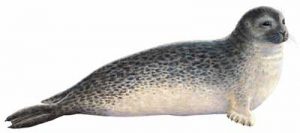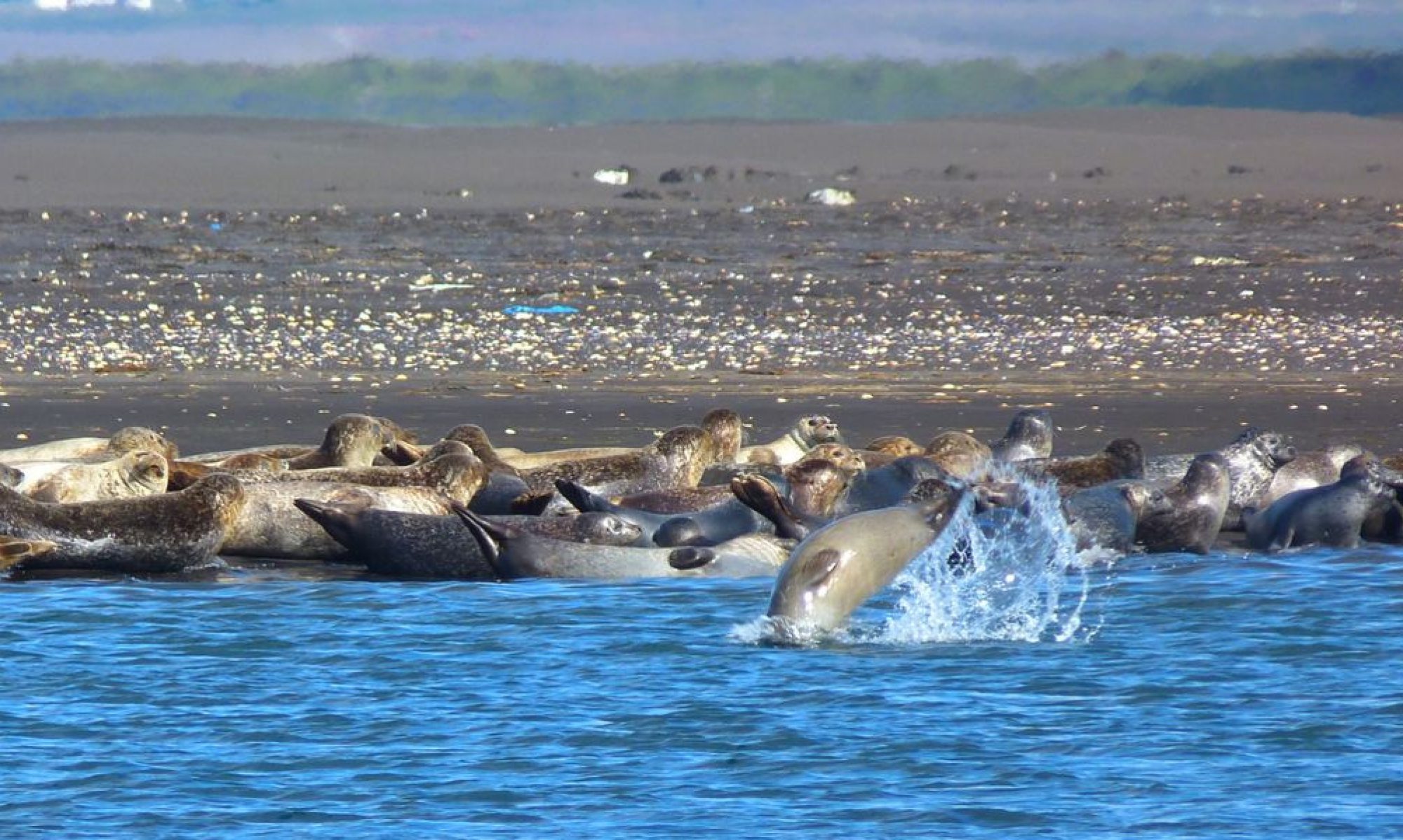
Harbour seal (Phoca vitulina)
The harbour seal is the most common seal around Iceland, though it resides mainly around the north-western coast. The harbour seal can grow to 2 m long and weigh around 100 kg, the male being slightly bigger then the female. Females usually live 30-35 years, whereas males’ life expectancy is 20-25 years.
In June, the female gives birth to one pup. At birth the pup is covered in grey hair and is usually around 80 cm long and can weigh close to 10 kg. The female nurses the pup for 3–4 weeks, after which it has to take care of itself.
In August, the adults shed their hair and the mating season begins. After mating, the harbour seals move to skerries and small reefs, further from shore, to look for food. Their diet consists of fish such as small cod (Gadus morhua), redfish (Sebastes spp.), baitfish (e.g. Mallotus villosus and Ammodytes sp.), coalfish (Pallachius virens), herring (Clupea harengus), wolffish (Anarhichas spp.) and various flatfish (Pleuronectiformes).
The harbour seal is not known for extensive migration, but sometimes the young animals wander far. Older animals come back to the same seal colony year after year, and it is most likely their own birth colony.
The harbour seal is distributed across the Northern Hemisphere, but is not found in great abundance in the Arctic Ocean. The global harbour seal population is estimated around 315.000 animals (ICUN), but it has slowly declined in recent years, mainly because of a viral epidemic in the North Sea.
In 2003, the Icelandic harbour seal stock was estimated around 10.000 animals, which is only one third of its size in 1980. In 2016, the year of the last completed assessment, there were an estimated 7.652 Icelandic harbour seals. The species has recently been defined as critically endangered in Icelandic waters by the Icelandic Institute of Natural History. The stock has decreased most in the Breiðafjörður–Faxaflói region, along the south coast and in the East Fjords. The majority of the Icelandic harbour seal population is now found in Húnaflói area.

